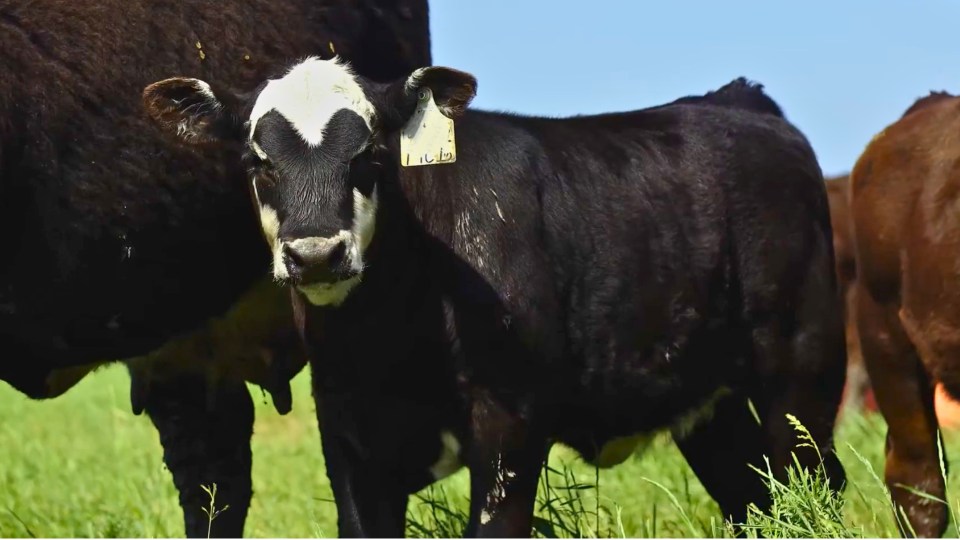Implanting suckling calves can add $66 opportunity per head
By Lee-Anne Walter
Are you implanting your calves at branding or spring turnout? The answer to that question can have a significant impact on your profits this fall. For an investment of approximately $1.50 per head, implants result in a $60-$66 increase in calf value in today’s market.1,2

Here are questions that I often get asked from cow/calf producers:
What advantage can I expect to see if I implant suckling calves?
Growth implants have been extensively studied for decades. Implanting suckling calves at branding can significantly enhance average daily gain between branding and weaning, resulting in more saleable weight every fall. The research findings are consistent in terms of the performance advantage implants offer and how that equates to more profit. A 23-trial summary of more than 2,358 suckling calves showed an average weaning weight advantage of 23 pounds in cattle administered an implant.1
If I implant suckling calves, will there be a loss of performance in later stages?
Studies consistently show producers who implant suckling calves will have a competitive weight advantage with no loss of subsequent performance in later production phases after using a calf implant.3,4 When the right implants are used — matching strength of the implant to weight, growth rate and composition of gain — an ROI can be achieved during each phase of production.
Will calves that are destined to be higher performing benefit from being implanted?
When we evaluate implanting, we look at percent improvement on the rate of gain. If an implant is expected to provide a 10% improvement of average daily gain, cattle likely to be higher performers are going to benefit more from being implanted than slower-performing counterparts. However, implanting pays off no matter the animal.
Is it easy to implant?
The RALOGUN® for RALGRO® (zeranol implants) is one of the most reliable devices in the industry. Its small needle diameter reduces tissue trauma and increases the likelihood of proper placement. Ralgro has been used for more than 50 years and is approved for use in calves, stockers, and feedlot cattle on both steers and heifers.
Will I leave money on the table if I do not implant?
A study published in 2019 looked at sale prices of beef calf lots enrolled in the non-hormone treated cattle (NHTC) program and those that received implants — sold through 67 summer video auctions from 2010 through 2018.5 There were 40,941 lots of beef calves used in the analysis.
When comparing NHTC and implanted lots of cattle, the implant status did not result in a price reduction in any year, indicating no price difference between implanted lots and NHTC lots of cattle. Unless calves ultimately will be marketed in verified NHTC programs that offer a premium that outweighs the productivity and efficiency of gains from implants, calves that are destined for finishing and sale to a terminal market should be implanted.
Important Safety Information
Not for use in humans. Keep out of reach of children. No withdrawal period is required when used according to labeling. Do not use in beef calves less than 2 months of age, dairy calves, and veal calves. A withdrawal period has not been established for this product in pre-ruminating calves. Do not use in replacement beef heifers after weaning or in dairy cows or replacement dairy heifers. Use in these cattle may cause drug residues in milk and/or calves born to these cows. Implant pellets subcutaneously in ear only. Any other location is a violation of Federal law. Do not attempt salvage of implanted site for human or animal food. Not approved for repeated implantation (reimplantation) with this or any other cattle ear implant within a single production phase as safety and effectiveness have not been evaluated. For complete safety information, refer to the product label.
References
- Selk, G. Implants for Suckling Steer and Heifer Calves and Potential Replacement Heifers. Proceedings: Impact of Implants on Performance and Carcass Value of Beef Cattle. Oklahoma State University, P-957. 2007. 40.
- Superior Livestock Sale data report 2024.
- Laudert S., Matsushima J., Wray M.Effect of Ralgro implant on suckling, growing and finishing cattle. 1981.
- Pritchard R., Bruns K., Boggs D. A comparison of lifetime implant strategies for beef steers. South Dakota Beef Report. 2003.
- McCabe, E., King M., Fike, K., Smith M., Hill, K. Effect of implant status and non-hormone treated cattle status on sale price of beef calves-Superior Livestock Video Auction. J. Anim. Sci. July 2019. 97(Suppl. S2), 7. https://doi.org/10.1093/jas/skz122.012
Find more content for your beef operation.
About the author

Lee-Anne Walter, Ph.D.
Technical Services,
Merck Animal Health
